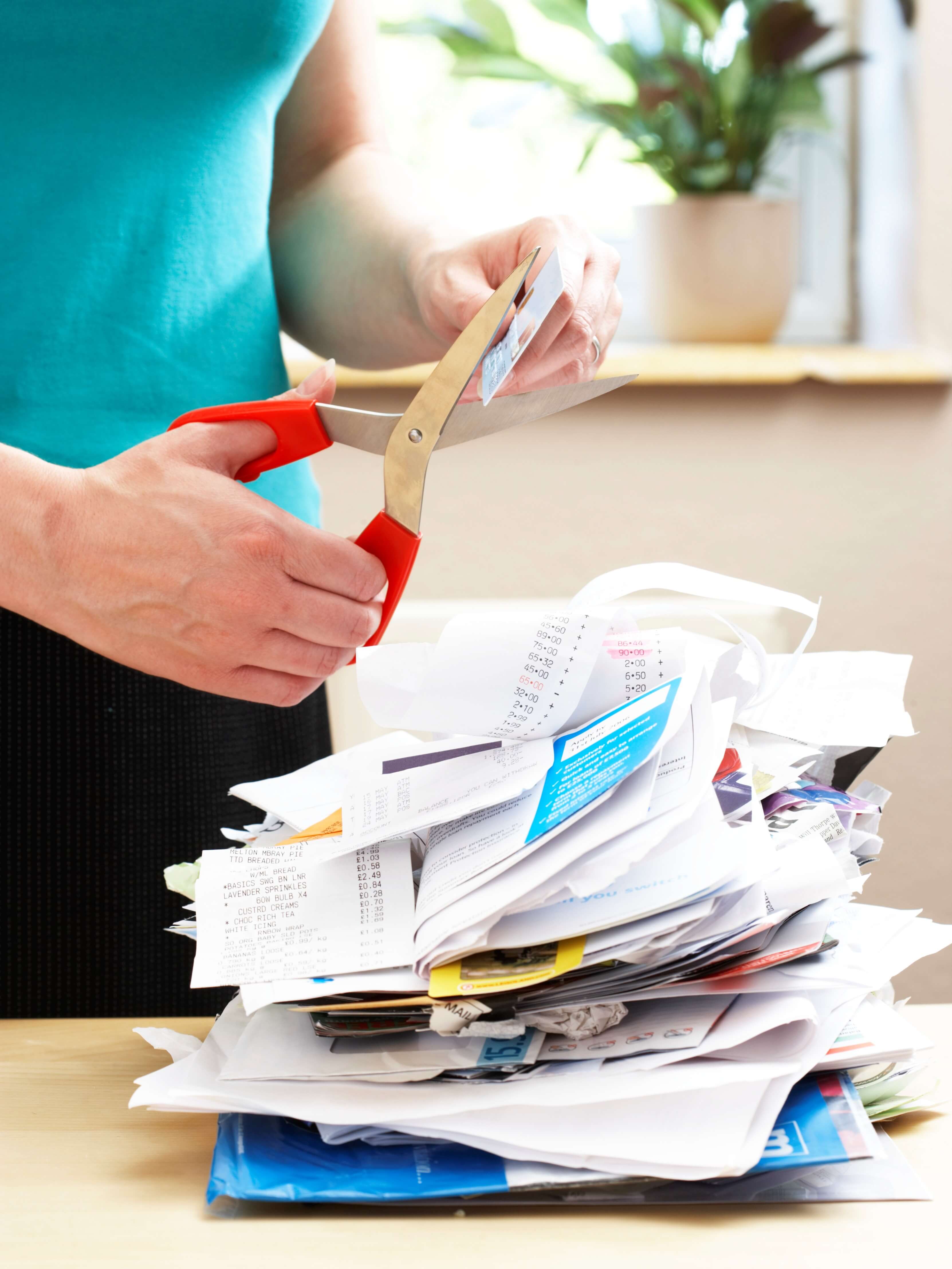Your How-To Guide for Home Document Destruction

Papers can pile up quickly around the house. Whether it’s old receipts, bills, or sales flyers, there always seems to be something that needs to be thrown out. However, it’s important to take some time to consider exactly what you’re throwing away – and whether it needs to be destroyed before you do.
Why Home Document Destruction is Important
While not as common as it once was, dumpster diving and trash theft still contribute to the thriving practice of identity theft. It may sound like more trouble than it’s worth to paw through general household garbage just for a few sheets of paper, but the information on a single form can be enough to steal thousands of dollars from an average bank account.
In fact, to access your accounts and create credit cards or loans in your name, scammers really require only three pieces of information: your name, address, and date of birth. That’s it. All of those can be found in a birthday card.
You are your own first line of defense against identity theft. By recognizing the risks and taking the initiative to dispose of sensitive information, you make it that much harder for your information to end up in the wrong hands. If there’s nothing for a thief to recover, they have nothing to work with.
Figuring Out What Needs to be Destroyed
On any given day, your mailbox might contain a greeting card, a bank account statement, a credit card application form, and a flyer from the local department store. How do you know which of these needs to be destroyed before it’s safe to throw out?
That’s a bit of a trick question on our end: each one of those pieces of mail could have information that puts you at risk for identity theft or monetary fraud.
As you sort through your documents, keep an eye out for any of the pieces of information listed below. If a piece of paper records any one of these details, you’ll need to make sure it’s destroyed before you chuck it in the garbage can.
- Signature
- Date of birth
- Address
- Account number
- Password
- Full name
- ID number
- Old credit or ID card
Methods for Safe Disposal
For information to be unrecoverable, it must be impossible to put back together. There are several different ways to achieve this:
- Pulping – Pulping is a process by which paper documents are broken down and blended into pulp. This is done by combining the papers in a receptacle with a liquid solution to help loosen the wood fibers. Once they are soft, they can be blended, strained, and left to dry. Afterwards, provided no bleach or other harmful chemicals were used in the process, the pulp can be repurposed as yard mulch.
- Burning – The purpose of this method is to reduce all sensitive information into unreadable ashes. For burning, papers will need to be confined to a designated burn area (typically a fire pit or a burn barrel) and safely burned. The ability to dispose of papers by this method will likely be contingent upon local zoning laws and permits. Safety precautions should also be strictly followed before and during the process.
- Shredding – Arguably one of the most accessible and easy ways to perform document destruction at home, shredding works by physically cutting apart papers into tiny pieces. It is important to bear in mind that for home shredding to be effective, the machine needs to be capable of cross-cutting (that is, cutting paper into confetti rather than long strands). These machines can be more expensive, and may require regular maintenance, especially if shredding papers in bulk.
- Digital Disposal – Should you have information stored on hard drives, flash drives, or other forms of e-media, chances are good that you will have to physically destroy the device in order to destroy all traces of the information it contains.
In the case of credit cards or old ID cards, a home shredder might not be enough to guarantee that their value will be erased for thieves. Today, many credit cards contain an RFID chip, which stores all the card’s information. The same is true of the card’s magnetic strip. Both must be completely destroyed to ensure that the data is permanently erased and irretrievable.
Where to Professionally Destroy Home Documents
Dealing with one or two pieces of paper is something that can generally be accomplished at home. However, shredding boxes and boxes of old bills, tax records, and credit card solicitations can take up a ridiculous amount of time. If you want your document destruction to be thorough, quick, and cost-effective, your best bet is to find a nearby residential shredding service.
The shredding service will dispatch a tracked, self-contained mobile unit to the location you specify. Once it arrives, all you must do is provide the documents you’d like to be destroyed. The uniformed technician will safely and securely transfer your documents into the shredding machine, and you’ll be able to watch as your papers are crosscut according to the specifications laid out by federal and state privacy legislation. At the conclusion of the service, the technician will provide you with a Certificate of Destruction, verifying the time, date, and destruction of your papers.
To learn more about document destruction or our residential shredding services, call our office today at (262) 877-8878. You can also contact us online.
